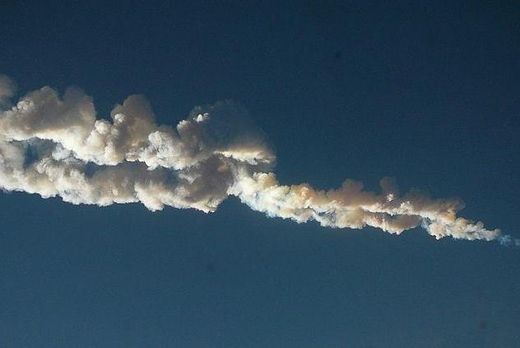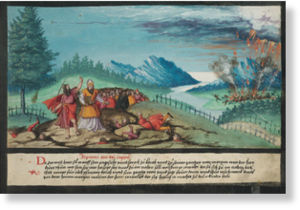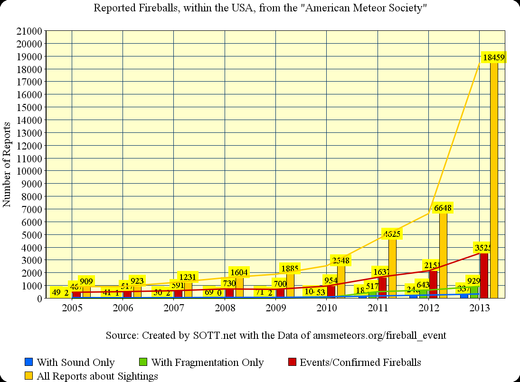Weird title, huh? How in the world can “fear of strangers”, which is touted by our revered leaders as our best protection, be the cause of self-destruction? And what does it have to do with the Odyssey, the Old and New Testaments?
It’s pretty simple, actually.
One of the dominant themes of the Odyssey, which also appears in the Old and New Testaments, is hospitality and knowing how to treat a stranger if you are the host, and knowing how, as a guest, you ought to respond to good or bad hospitality.
Bruce Louden, in his book Homer’s Odyssey and the Near East, examined the epic to look for clues on how to determine who was violating the rules and the laws of hospitality, aka the rules of life, and thus why this or that person or group was destroyed by the gods.
[T]he three great Odyssean principles that will become virtual constants of the rule-system of classical narrative: that crime brings inevitable punishment, brain is intrinsically stronger than brawn, and trespass on another’s property is an invariably fatal violation . . . any mortal contempt for divine status or authority – invariably brings retribution, whether on the ogre Polyphemus, the beggar, Irus, or even (in his blasphemous final outburst to the blinded giant) Odysseus himself . . . To a great extent, the narrative roles of the human players themselves are straightforwardly defined in terms of these moral laws.
( Bruce Louden (2011), Homer’s Odyssey and the Near East, Cambridge University Press.)
The principles of life governing the action portrayed in the Odyssey would have been well and widely understood at the time the story was being recited in social groupings of the ancient world, and no doubt, the listeners would nod in agreement as each episode unfolded and then concluded in justice being served.
So, basically, there was a time when the universal law of reciprocity was more widely and clearly understood. Unfortunately, the people of today have lost sight of this cause-and-effect relationship, but are still doomed to suffer the consequences. The law is inescapable and ignorance is no excuse. It doesn’t matter how solitary or non-materialistic a person is, they will always be a part of some kind of exchange as long as they exist. From impressions and breathing to social interactions and material exchange, only the scale differs. At the moment we are both hosts and guests, to other individuals, groups, the earth and the universe.
An Indo-European linguistic echo of this relationship is preserved in the similarity between the English words guest and host, as explained by David Anthony:
The two social roles opposed in English guest and host were originally two reciprocal aspects of the same relationship. The late Proto-Indo-European guest-host relationship required that “hospitality” (from the same root through Latin hospes ‘foreigner, guest’) and “friendship” should be extended by hosts to guests in the knowledge that the receiver and giver of “hospitality” could later reverse roles. The social meaning of these words was then more demanding than modern customs would suggest. The guest-host relationship was bound by oaths and sacrifices so serious that Homer’s warriors, Glaukos and Diomedes, stopped fighting and presented gifts to each other when they learned that their grandfathers had shared a guest-host relationship. …
This institution redefined who belonged under the social umbrella, and extended protection to new groups. It would have been very useful as a new way to incorporate outsiders as people with clearly defined rights and protections, as it was used from The Odyssey to medieval Europe….
The guest-host institution extended the protections of oath-bound obligations to new social groups. An Indo-European-speaking patron could accept and integrate outsiders as clients without shaming them or assigning them permanently to submissive roles … the spread of Proto-Indo-European probably was more like a franchising operation than an invasion.
(David W. Anthony (2007), The Horse, the Wheel and Language, Princeton University Press, Princeton. Pp. 303, 342, 343 excerpts, emphases, mine.)
The same theme runs like a thread through the Old Testament, ancient Near-Eastern stories gathered together much later, under Graeco-Roman influence, to be compiled as a fake “History of the Jews”. (There are a growing number of scholars who are convinced that the Bible ripped off Homer and other Greek – and some Mesopotamian and Roman – literature in order to create their history.)
OT myth’s relevance is evident in the close parallels three well-known myths offer to the Odyssey. Joseph, separated from his brothers and father for virtually the same length of time Odysseus is away from Ithaka, meets with them unrecognized and submits them to various painful tests, before revealing his identity to them. The recognition scenes serve as the climax to his narrative, as do Odysseus’ recognition scenes with Penelope and Laertes. The parallels suggest a highly developed form of romance, with intricate recognition scenes; it is a mythical genre common to both Greek and Israelite culture …
Odysseus’ crew, confined on Thrinakia for a month, in revolt, sacrificing Helios’ cattle in a perverse ritual, offers extensive parallels to the Israelites’ revolt against Moses, and perverse worship of the gilded calf in Exodus 32. The myths of Jonah and Odysseus suggest that Greek and Israelite culture both have a genre of myth we might think of as the fantastic voyage.
The fantastic voyage is life, individual or collective, and these stories hold the clues on how it works and how to navigate.
Many of the genres of myth in the Odyssey, such as theoxeny (hospitality), challenge usual assumptions of what constitutes an epic. For the greater part of nine books (14-22) Odysseus, to all outward appearances, is a beggar, associating with lowly slaves, abused, unrecognized in his own kingdom. This is unexpected behavior for an epic hero.
Later on, the same theme comes up with doubled force in the bible in the tale of the three strangers entertained by Abraham, a very good host, who announced the coming destruction of the cities of the plain: Sodom and Gomorrah. In this little tale, the principle of the rules of hospitality is plainly revealed: one should treat others generously because they could be gods in disguise. Abraham washed their feet and prepared a meal, so he was okay; there was even a little arguing going on between him and the gods, which is a curious twist on certain Odyssean dramas where gods argue with one another over whether or not to destroy this or that person or group of people because they have insulted the gods. (Insulting the gods could be done in any number of ways, the main one being violating any of the rules of hospitality). In any event, because of his scrupulous hospitality, the angels/gods reveal to Abraham their plan and promise him a reward: a child, despite the fact that he and Sarah are now pretty old and decrepit.
Louden writes:
As I will argue, the parallels are far too frequent and close (differences in tone and narrative agendas notwithstanding) for coincidence. The similarities between Greek and Near Eastern myth suggest some form of diffusion. I assume that each tradition, Homeric or Near Eastern, learned or acquired a “template” of the respective genre of myth, to which each culture then made some modifications, added more local details, to make it fit into the specific context in which that culture now employed it. The Odyssey, for instance, uses theoxeny as episodes in the lives of warriors, Odysseus, Nestor, and Telemachos, whereas OT myth employs theoxeny as episodes in the lives of patriarchs, Abraham and Lot. Because of the different type of characters featured, the respective instances have different modalities. The warrior Odysseus himself carries out the destruction of the suitors, as demanded by Athena, whereas in Genesis 19 destruction rains down from the sky.
It is altogether likely that the plagues that afflicted the Egyptians when Abraham was told to take his wife and go, and the blast that smote Sodom and Gomorrah as Lot and his family were fleeing, were originally a single story event later separated and then later still recombined with added elements to create the Exodus story. The possible real historical event that these stories were wrapped around could have been a Tunguska-like overhead cometary blast which, as current cutting-edge science reveals, apparently happens a lot more often than our revised and sanitized histories admit.
In the New Testament, the character Jesus also gives repeated examples of the Cosmic Law of Hospitality, even going so far as to explicitly say that whenever a person is kind and giving to anyone in real need, they are demonstrating hospitality to the gods, the life principle. He also gave a vivid demonstration of the right of the host to defend his home against violations of hospitality by the guests when he went on his rampage against the money-lenders in the temple.
The same types of stories, probably drawn from the same Indo-European exemplars, were told in Norse sagas with Odin or Thor playing the part of Jupiter, Mercury or some supreme male god or psychopomp. One of the oldest written sources on the Scandinavian legends is Adam of Bremen’s Gesta Hammaburgensis ecclesiae pontificum (1080 AD), which he claimed was based on first-hand accounts.
Odin was known to travel about in disguise and test the hospitality of his people, so, in that sense, he was more like Odysseus. Odin is also associated with trickery, cunning and deception, just as Odysseus was. Icelandic historian, poet, and politician Snorri Sturluson obviously noticed the similarities and felt compelled to give a rational account of the Æsir in the prologue of his Prose Edda; he speculated that Odin and his peers were originally refugees from Troy (surprise, surprise!) as the Greeks, Romans, Goths, British and others claimed also. In other words, the stories of the Norse gods were just the Northern version of the Odyssey. The point of this is that the ideas and principles conveyed in the Odyssey, the oldest form of the stories extant, were part and parcel of the way humans evolved to survive in ancient times, and I would like to suggest that they weren’t necessarily a superstitious bunch who danced naked in the moonlight or smeared bear grease in their hair.
The ancients were quite certain that human behavior could attract or repel the wrath of the gods. Most often, it was the behavior of the priest-king that was the crucial element. It was his job to figure out what the gods wanted in respect of human behavior and to ensure that this was how things were done so that the kingdom would be safe. There were a few good examples of this principle, where the king was “righteous” and took care of his people like a tender parent, conducted his own life so as to set a positive example for all, and things were fine … until … a pathological type would get into power in one way or another and begin to pervert the entire system. When that happened, scape-goating became the rule of the day and “sacrifice” was declared to be what the gods wanted: witch-hunts began. Such times always and ever preceded large-scale destruction of the society.
The entire cosmos seems to be made of information and mirrors. The living system and the cosmos interact constantly, receiving and transmitting. As above, so below. But there are also choices.
We all receive impressions from our environment and react to them in different ways: rebelling, ignoring or just copying what we perceive. Whatever the reaction, we react based on our personal understanding, our past experiences, our feelings and our sense of morality. We are influenced, but we also have the ability to influence. Our capacity to contemplate the past, present and future in a connected way, to feel deeply about others and to judge and choose either ‘right’ or ‘wrong’ is what makes us human.
It really is down to us collectively. We are the power source and the authors, whether we allow a leader to represent and direct us or not, we are ultimately responsible for our world. If that’s really the case, seeing that we have a choice in how things turn out and learning how to direct our course seems rather important.
It appears that in earlier history, man understood that he had some control over his own destiny and the fate of society through his righteous behavior. Theoxeny was a moral standard. Every person was seen as having the potential to either help or hinder prosperity and health for all. Even if some could give more than others, everyone had the privilege and the duty to contribute their best. Every person’s actions counted and their actions were responded to with justice through other people and the universe.
But a pathology took hold, and though it could not completely change the nature of man or take away his ability to choose, it influenced society and altered humanity’s course because of our acceptance of it. As awareness declined, good intentions were subverted and our integrity as a species diminished. Humans have become a species tuned in to entropy, and what we choose and express will become our fate. We have given up our personal responsibility to each other as hosts and guests and therefore will end up being our own destruction.
When reading history, over and over again the same cycle can be seen. The point that I would like to emphasize is that human beings do have some control over their destiny as individuals and groups, nations and civilizations. But that “control” is rather more like putting oneself into alignment with universal principles and activating them in practice. But obviously, one has to be careful and find out what those principles actually are! Obviously, those ancient civilizations that believed the lies of the evil masters who declared that sacrifice of their enemies, or war against this group or that group, was what the gods wanted, didn’t do that. Thus we see that relying on the rules of anthropocentric religions can be deadly: witness the destruction of the Roman Empire that came with Christianity.
The ancient literature on these topics can be mined for knowledge and wisdom. Indeed, it appears to be the case that taking assertive action against violators of Cosmic Hospitality oneself can prevent the gods from having to do it. And one can notice that when the gods do it, the action falls not only on the corrupt elite, but also on those who would choose to do nothing, those who permit the evils and corruptions to continue and perpetuate: witness Lot’s wife. Abraham pleaded for Sodom “if there were just ten righteous men”. There weren’t. And, apparently, the righteousness of Lot and his family wasn’t enough, though they were saved out of the destruction.
Jesus went after the corrupt bankers in the temple and warned the entire society of coming destruction which, in 70 AD, wiped out the city of Jerusalem. Of course, this is credited to the Roman army, but there are indicators in Josephus and Tacitus that there very well may have been another Tunguska-like event involved there as well, which was later edited out and the destruction was attributed to the actions of men. And here, I’m not concerned about who Jesus was or whether the texts were written after the fact; what is important is that they followed story norms, borrowing from other similar tales, which were based on ancient principles of Cosmic Hospitality.
Ignorance of these laws is no protection. In fact, ignorance of them might be seen as a deliberate flouting. The Cosmos exists to be loved and you cannot love what you do not know. Thus, it is the duty of every self-conscious creature to exert all their efforts, within their inherent capacities, to know and thus to be able to love the Cosmos. Those creatures that cannot or will not do this are considered by Nature to be failed experiments and they or their lines will be extinguished.
The point is made near the end of the Odyssey, that silence is assent. Eurymachus attempts to plead with Odysseus, saying, “He who was most to blame is already dead. It was Antinous who was behind all these doings … Now he has received his just punishment, give up your anger against us! Spare your equals in rank! Every one of us shall bring you twenty bullocks in recompense for what we have eaten, and you shall have all the bronze and gold it will take to win back your favor.”
“No, Eurymachus,” said Odysseus, scowling at him. “Even if you offered me everything you have inherited from your fathers, I should not rest until all of you have atoned for your misdeeds with death. Do what you will, fight or flee – not one of you shall escape me!”
Nor did they.





